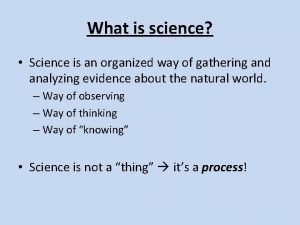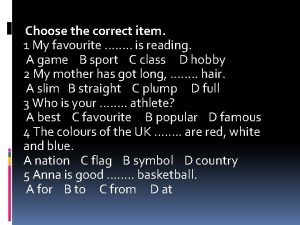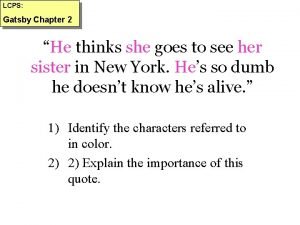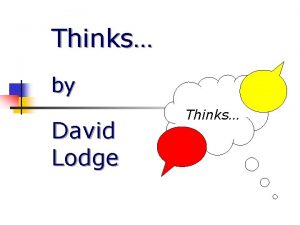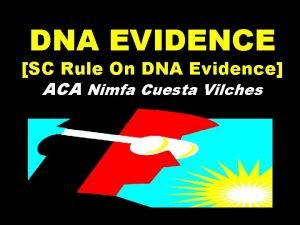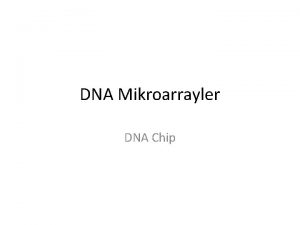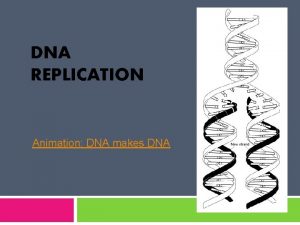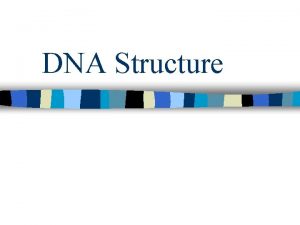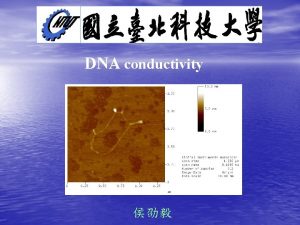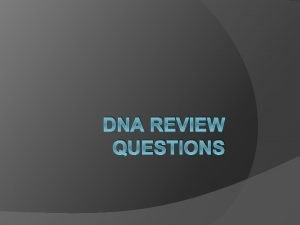DNA Evidence Thinks and Questions Analyzing DNA Evidence























- Slides: 23

DNA Evidence Thinks and Questions

Analyzing DNA Evidence 1. 2. 3. 4. Extract DNA PCR Amplification Electrophoresis Separation Comparison

Extract DNA Goal: Get the DNA out of the cell so we can analyze it Steps: 1. 2. 3. 4. Use detergent and enzymes to open cell membrane and nucleus Use salt to clump cellular debris together Use centrifuge to separate heavy debris from the DNA Use alcohol to separate DNA from solution

PCR Amplification ● Problem: When we collect samples from a crime scene, we often have only very tiny amounts of DNA for us to use ○ And remember, only the filler DNA is useful anway! ● Solution: We use PCR amplification to cut and copy the DNA ○ We trim specific sections of filler DNA that we want ○ We make copies of those sections

PCR Amplification - Trimming ● Remember that DNA is made up of base pairs ○ The base pairs always pair up the same way ○ If we have 1 half-strand, we know exactly what the other half-strand looks like ● We can target specific sections of base pairs using primers ○ Primers = short pieces of half-stranded DNA ○ Primers will attach to half-stranded DNA in the sample ○ We choose what bases we put on the primer, so we control where the primer attaches to a half-strand in our DNA sample ○ This gives us the end-points of our target section

PCR Amplification - Trimming

PCR Amplification - Trimming ● In order for primers to attach, the DNA must already be split into half-strands! ● We need two primers - one for each end of our target section ○ We choose STRs for our target section ○ STR = Section of filler DNA that repeats itself in multiple areas of the DNA strand

PCR Amplification - Trimming The STR in this example is “AGAT” It repeats itself multiple times in multiple locations

PCR Amplification - Copying ● Amplify = copy ● We use an enzyme called DNA polymerase to make copies ○ Attaches itself to the end of the primer ○ Reads the half-strand of the DNA sample ○ Pulls nucleotides (loose bases) in to pair up with the halfstrand

PCR Amplification - Copying

PCR Amplification - Copying ● The polymerase travels along the half-stranded DNA from the primer to the end of the molecule ○ Only one direction ○ As more pieces get trimmed, the “end” of the molecule will be the other primer!

PCR Amplification - Copying

PCR Amplification Cycle 1. Denaturing - We heat the DNA to split it into half-strands 2. Annealing - We cool the mixture, allowing the primers to attach 3. Extension - DNA polymerase rebuilds the half-strand from the primer

What Next? ● PCR gives us a whole bunch of useful DNA segments (yay!) ● BUT they are all just mixed together in a test tube ○ We cannot do anything with them like this ○ We need to spread them out and sort them in order to compare them to other samples

Electrophoresis Separation ● Remember when we said STR’s repeat multiple times in multiple locations? ● This means the segments we get out of PCR will be many different lengths in each sample

Electrophoresis Separation ● Electrophoresis sorts out the segments we get from PCR ○ Groups them by length ○ Puts them in length order ● Once the segments are sorted and ordered, we can compare the groups (bands) from each sample ● Each person will have a different set of bands

Electrophoresis Separation

Electrophoresis Separation How It Works: DNA is dissolved in a solution that gets soaked into a gel ● Think jello with a bunch of holes in it ● DNA travels through the gel, but it has to go around the holes ● The smaller pieces of DNA are able to go faster because they are more maneuverable ● The faster the pieces can go, the farther they go

Electrophoresis Separation

Electrophoresis Separation ● We need the DNA to move in order to separate ● We use electricity to make it move ○ We put a negative charge at the starting side, and a positive charge at the opposite side ○ DNA has a small negative charge, so it travels across the gel toward the positive end

Electrophoresis Separation

Looking at an Electrophoresis Sample ● We run a size standard so we can compare/estimate the length of DNA fragments ● We look at bands for: ○ The length of the fragments (how far they traveled) ○ The size of the band (how many fragments in the group)

Looking at Electrophoresis Samples
 Stomata
Stomata Inferring characteristics
Inferring characteristics Thinks critically and analyses nursing practice
Thinks critically and analyses nursing practice Evaluative feedback examples
Evaluative feedback examples Coding dna and non coding dna
Coding dna and non coding dna Reaction paragraph
Reaction paragraph Oh the thinks you can think quotes
Oh the thinks you can think quotes As a man think so is he
As a man think so is he Knit pasado simple
Knit pasado simple The writer thinks that
The writer thinks that What is percy's fatal mistake while battling the chimera
What is percy's fatal mistake while battling the chimera Holden and sunny quotes
Holden and sunny quotes Choose the correct item
Choose the correct item Eric thinks doing schoolwork is one big video game.
Eric thinks doing schoolwork is one big video game. Literary devices in fahrenheit 451
Literary devices in fahrenheit 451 If anyone thinks he is religious
If anyone thinks he is religious Chapter 2 lesson 1 building health skills
Chapter 2 lesson 1 building health skills Career exploration icebreakers
Career exploration icebreakers He thinks she goes to see her sister in new york
He thinks she goes to see her sister in new york What my family thinks i do meme
What my family thinks i do meme Meme activity
Meme activity How can class evidence be useful
How can class evidence be useful Replication
Replication Bioflix activity dna replication lagging strand synthesis
Bioflix activity dna replication lagging strand synthesis
